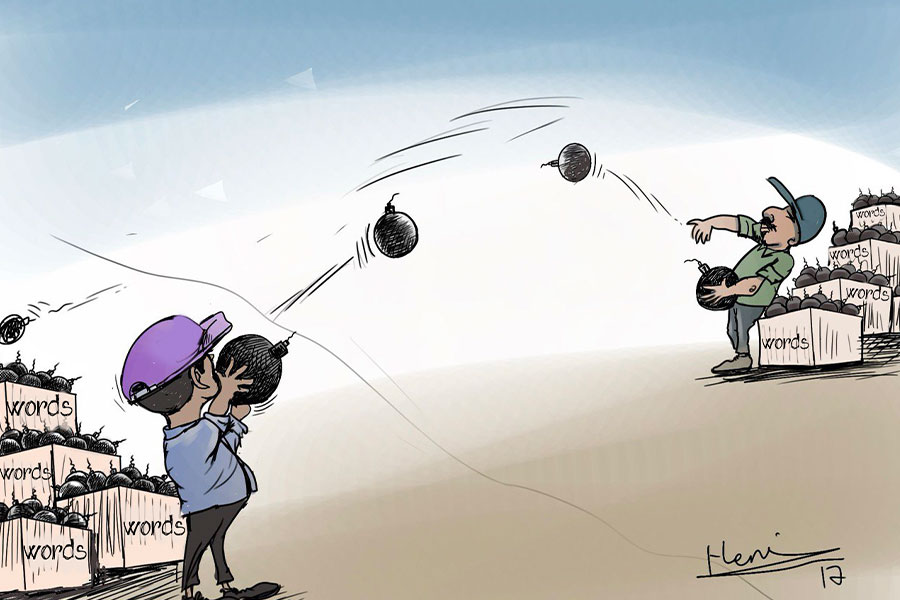
Kemise Wereda suddenly grew dark in the middle of the day last month. The sun could barely be seen anymore. On most other years, this would have been the clouds. That day, and for days to come, it was a swarm of desert locusts, the world’s most dangerous migratory pest, announcing their appearance. Short on any means of effectively fighting against the swarms, the farmers’ attempts proved to be an exercise in futility.
"Can you count the raindrops from the sky?" says one of the farmers in the area. "That's what we were up against."
Several of the stories coming from farmers were harrowing. "My wife collapsed when she saw the damaged crops," another farmer told BBC Amharic. "She agonised over what to feed the children."
This was not just the fate of farmers in Kemise, nor even Ethiopia. The desert locusts have infested areas in Eritrea, Somalia, Djibouti, Sudan and Kenya. The severity was one that has not been witnessed in a quarter of a century. Combined with heavy rains that created the ideal breeding environment for the locusts, they managed to proliferate by 8,000-fold, according to the Food & Agriculture Organisation.
The locusts have thus far infested 281,000ha of land. By the time that the locusts are done, a total of 2.4 million hectares of farming and pasture lands are expected to be impacted. Together with floods and droughts, this is estimated to worsen food insecurity in the country that would require well over a billion dollars to address.
As the severity of the desert locust infestation became evident last weekend, it has led to criticism against the local and federal agricultural bureaus for their mishandling of the issue. Despite warnings of desert locust swarms from as far back as 2019, just a little over half of the land infested with the pests has been treated with pesticides since July, according to the Ministry of Agriculture.
But even the antidote to the desert locusts may have adverse effects in itself, as some experts see it, not to mention talk of its ineffectiveness. This has to do with the locusts laying their eggs deeper in the ground than the pesticides can reach. Compounding this is the possibility that the 200,000lt of insecticide that have been sprayed since March may poison crops.
"We need to assess the amount, type and duration of insecticide use," said an expert in plant sciences and entomology.
You can read the full story here
PUBLISHED ON
Oct 17,2020 [ VOL
21 , NO
1068]

Dec 22 , 2024 . By TIZITA SHEWAFERAW
Charged with transforming colossal state-owned enterprises into modern and competitiv...

Aug 18 , 2024 . By AKSAH ITALO
Although predictable Yonas Zerihun's job in the ride-hailing service is not immune to...

Jul 28 , 2024 . By TIZITA SHEWAFERAW
Unhabitual, perhaps too many, Samuel Gebreyohannes, 38, used to occasionally enjoy a couple of beers at breakfast. However, he recently swit...

Jul 13 , 2024 . By AKSAH ITALO
Investors who rely on tractors, trucks, and field vehicles for commuting, transporting commodities, and f...

Jun 28 , 2025
Meseret Damtie, the assertive auditor general, has never been shy about naming names...

Jun 21 , 2025
A well-worn adage says, “Budget is not destiny, but it is direction.” Examining t...

Jun 14 , 2025
Yet again, the Horn of Africa is bracing for trouble. A region already frayed by wars...

Jun 7 , 2025
Few promises shine brighter in Addis Abeba than the pledge of a roof for every family...